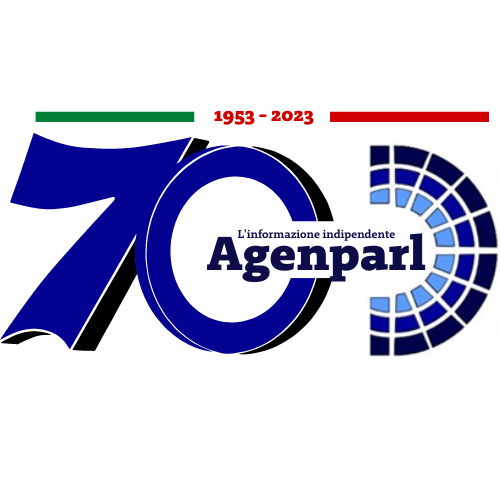 (AGENPARL) - Roma, 12 Novembre 2022
(AGENPARL) - Roma, 12 Novembre 2022(AGENPARL) – sab 12 novembre 2022 November 11, 2022
MEDIA ADVISORY M22-170
NASA Sets New Coverage for Artemis I Moon Mission Launch
NASA confirmed it remains on track for the launch of the Artemis I Moon mission during a two-hour launch window that opens at 1:04 a.m. EST on Wednesday, Nov. 16.
The?[launch countdown](https://www.nasa.gov/content/artemis-i-launch-countdown-101)?will begin at 1:24 a.m. on Monday, Nov. 14.
[Artemis I](http://www.nasa.gov/artemis-1) is the first integrated flight test of NASA’s Space Launch System (SLS) rocket, an uncrewed Orion spacecraft, and the ground systems at the agency’s Kennedy Space Center in Florida. The mission will pave the way for a crewed test flight and future human lunar exploration as part of Artemis.
Live coverage of briefings and events will air on NASA Television, the?[NASA app](https://www.nasa.gov/connect/apps.html), and the agency’s?website at:
https://www.nasa.gov/live
Engineers previously [rolled the rocket back](https://blogs.nasa.gov/artemis/2022/09/26/artemis-i-moon-rocket-departs-launch-pad-39b-ahead-of-hurricane-ian/) to the Vehicle Assembly Building (VAB) Sept. 26 ahead of Hurricane Ian and after waving off two previous launch attempts Aug. 29 due to a [faulty temperature sensor](https://blogs.nasa.gov/artemis/2022/08/30/nasa-targets-sept-3-for-next-artemis-i-moon-mission-launch-attempt/), and Sept. 4 due to a [liquid hydrogen leak](https://blogs.nasa.gov/artemis/2022/09/03/nasa-to-stand-down-on-artemis-i-launch-attempts-in-early-september-reviewing-options/) at an interface between the rocket and mobile launcher. Prior to rolling back to the VAB, teams successfully repaired the leak and demonstrated updated tanking procedures. While in the VAB, teams performed standard?maintenance?to repair minor damage to the foam and cork on the?thermal protection system?and recharge or replace batteries throughout the system.
A limited number of seats inside Kennedy’s Press Site auditorium will be available during NASA TV briefings to previously credentialed on-site journalists on a first-come, first-served basis. The deadline has passed for media accreditation for in-person coverage of this launch.
Media and members of the public may also ask questions on social media using #Artemis. Audio only of the briefings will be carried on the NASA “V” circuits, which may be accessed by dialing 321-867-1220, -1240 or -7135.
Full launch coverage is as follows. All times are Eastern, and the information is subject to change. Follow NASA’s Artemis [blog](https://blogs.nasa.gov/artemis/tag/artemis-i/) for updates.
Sunday, Nov. 13
7 p.m.: NASA will hold a prelaunch media teleconference following a mission management team meeting with the following participants:
– Bill Nelson, NASA administrator?
– Mike Sarafin, Artemis mission manager, NASA Headquarters
– Charlie Blackwell-Thompson, Artemis launch director, Exploration Ground Systems Program, Kennedy
– Emily Nelson, chief flight director, NASA Johnson
– Melody Lovin, weather officer, U.S. Space Launch Delta 45
Monday, Nov. 14
12 p.m.: NASA will hold a prelaunch media briefing on NASA TV to provide a status on the launch countdown with the following participants:
– Jeremy Parsons, Exploration Ground Systems Program deputy manager, NASA Kennedy
– Melody Lovin, weather officer, U.S. Space Launch Delta 45
Tuesday, Nov. 15
3:30 p.m.: NASA TV commentary coverage of tanking operations to load propellant into the SLS rocket begins, including views of the rocket and Launch Control Center, and audio from a commentator.
10:30 p.m.: NASA TV commentary coverage of launch begins in English. Coverage will continue through translunar injection and spacecraft separation, setting Orion on its path to the Moon.
Wednesday, Nov. 16
4 a.m.: NASA TV coverage of the postlaunch news conference will follow approximately one hour after the live launch broadcast ends. Coverage start time is subject to change, based on the exact liftoff time. The postlaunch news conference will include the following participants:
– Bill Nelson, NASA administrator?
– Mike Sarafin, Artemis mission manager, NASA Headquarters
– Mike Bolger, Exploration Ground Systems Program manager, Kennedy
– John Honeycutt, Space Launch System Program manager, Marshall
– Howard Hu, Orion Program manager, NASA’s Johnson Space Center
– Emily Nelson, chief flight director, Johnson
8:30 a.m.: NASA TV commentary coverage of Orion’s first outbound trajectory burn on the way to the Moon. Coverage start time is subject to change, based on the exact liftoff time.
10 a.m.: NASA TV commentary coverage of first Earth views from Orion during outbound coast to the Moon.
NASA Television coverage of additional events throughout the mission is?[available online](https://www.nasa.gov/multimedia/nasatv/schedule.html).
NASA Launch Coverage in English
Briefings and launch coverage will be available on the NASA?[website](https://www.nasa.gov/nasalive). Coverage will include live streaming and blog updates. On-demand video recordings and photos of the launch will be available shortly after liftoff. Follow countdown coverage on NASA’s Artemis blog at:
https://blogs.nasa.gov/artemis
For NASA TV downlink information, schedules, and links to streaming video, visit:
https://www.nasa.gov/nasatv
On launch day, a “tech feed” will be carried on the NASA TV media channel featuring views of the rocket and audio from a commentator in the Launch Control Center throughout and a single channel of mission audio beginning 15 minutes before launch.
Launch also will be available on local amateur VHF radio frequency 146.940 MHz and UHF radio frequency 444.925 MHz, FM mode, heard within Brevard County on the Space Coast.
NASA Launch Coverage in Spanish
NASA’s broadcast of the launch in Spanish will include interviews with Hispanic members of the mission and live commentary.
Attend Launch Virtually
Watch, Engage on Social Media

![[NASA HQ News] NASA Sets New Coverage for Artemis I Moon Mission Launch](https://agenparl.eu/wp-content/uploads/2023/07/nasa.png)